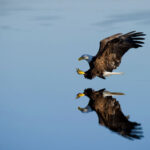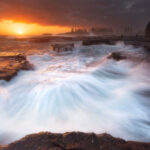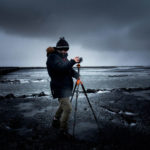If you love capturing the bright hues of autumn, chances are many of your attempts had ended with heartache. Modern cameras, even with all the latest technology, are not nearly sensitive enough to capture all the dynamic range in a typical autumn landscape scene. So, how do you make your autumn photos pop? Hopefully you haven’t thrown away those unprocessed RAW files, because in this video tutorial, photographer Serge Ramelli shows us exactly how to salvage them in Lightroom:
First things first. Let’s clear out a few things to get the basics right. Landscape photos require that you use a tripod, shoot at the smallest aperture you can get away with, expose for the highlights, and shoot in RAW.

Here is Ramelli’s image before editing.
The real trick is when you sit down in front of your computer and start editing the picture. Here are the steps according to Ramelli. (This tutorial assumes you are using Lightroom, though the steps are equally applicable on any other photo editing software.):
- Open up the shadows and bring down the highlights using the respective sliders.
- Bring up contrast in the image by pressing the alt key and then dragging the Whites slider to the right until you see some white spots appear on the image. Do the same for the Blacks slider until you see black spots appear on the image.
- Adjust the white balance. There is no clearly defined rule; adjust the white balance to your taste.
- Head for the HSL (Hue, Saturation and Luminance) tool. You can do selective changes for these three aspects to specific areas of a picture, which is what Ramelli shows in this tutorial. Adjust so that the colors of the foliage now appear warmer and autumn-like.
- Bring up the exposure if the image looks too under-exposed.
- Step 5 may just have opened another problem by making the sky look a bit washed out. Adjust it by applying a filter across the sky and lower the exposure to bring out more details. You may also want to adjust the temperature to make it a bit more blue. Adjust the clarity slider to retouch the clouds as needed.
- “Complexify the light” by incorporating the use of the radial filter in inverse. In the final context, the use of the filter appears like patches of light on the image.
- If you have a body of water in the image, use the brush tool to adjust and incorporate a bit of reflection.
- Use the graduated filter at the top and bottom part of the image.
- Adjust noise and sharpening. Ramelli uses a formula where whatever he values he uses for noise, he deducts that from 100 and uses that for the sharpening value.

Here is the final image after post-processing.
This quick fix will make your fall foliage photos look as vibrant as the scene you photographed.
Like This Article?
Don't Miss The Next One!
Join over 100,000 photographers of all experience levels who receive our free photography tips and articles to stay current:






Leave a Reply